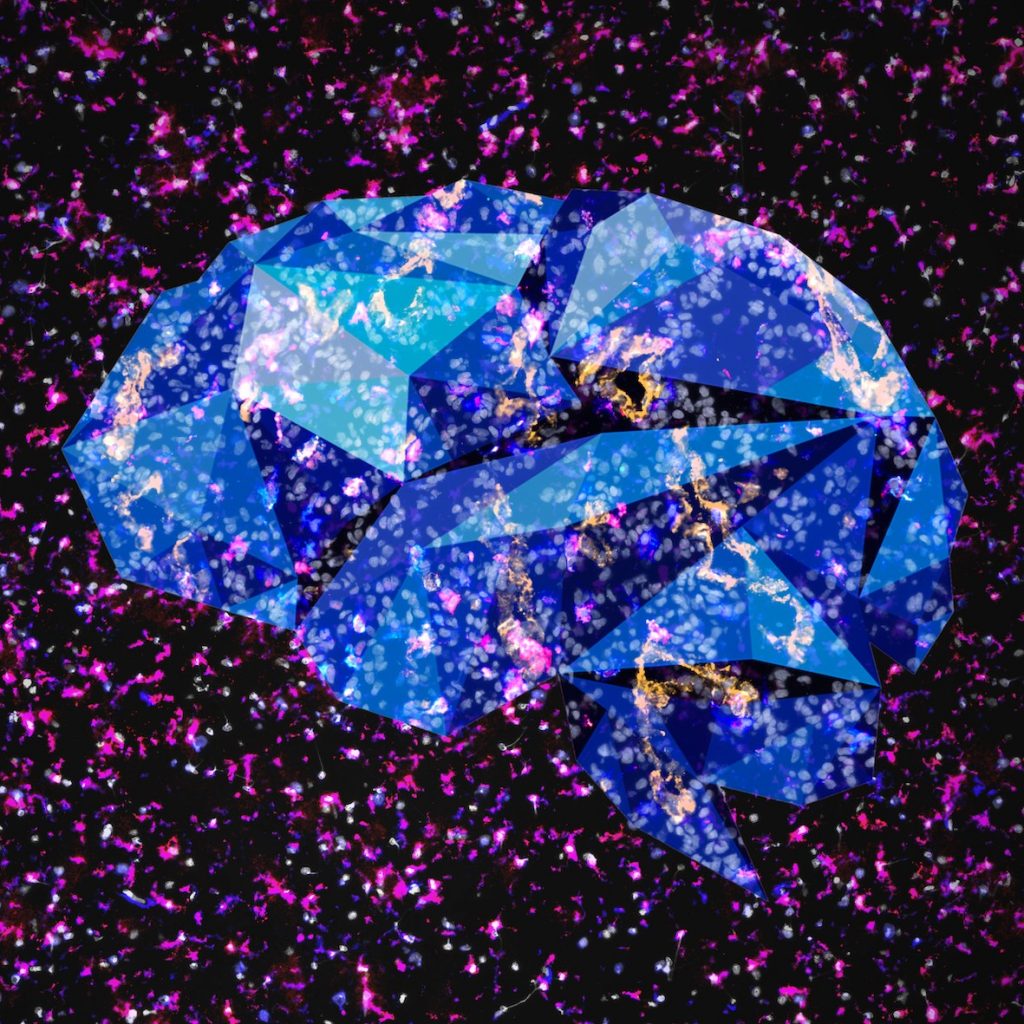
(c) Image: Roeltje Maas, Artist: Cléa Masserey
For more than five years, Johanna Joyce and her team at the University of Lausanne have investigated the microenvironment of the major brain cancers in adults. As a result of the enormous treasure of knowledge they have now acquired, it is possible to understand how brain tumors develop and progress by subverting the immune system. This revolutionary research published in CELL opens up new therapeutic avenues.
“Our study will help us discover new strategies to treat brain cancers and restore the functions of the immune system to fight these diseases”
What is this paper about?
This study is the first comprehensive interrogation of the immune cell landscape in patients with the most common types of brain cancers. Tumors in the brain can either develop in this organ (so-called primary cancers) or can spread to the brain from cancers in other organs of the body- such as the breast, lung or skin (termed metastatic cancers).
We wanted to know how all these different types of brain cancer interact with, and change the functions of, normal immune cells in a way that allows them to evade the immune system and develop within the brain. We were curious whether the immune landscape is formed differently between primary and metastatic brain cancers, even though they grow in the same organ, as this has important implications for developing therapeutic interventions against these devastating malignancies.
To be able to answer this question, we needed to be able to directly compare these brain cancers side by side using a pipeline of different experimental assays, and by doing that we discovered that the phenotypes of brain-associated immune cells were in fact predominantly dictated by the specific disease, more so than by infiltrating within the brain itself.
How did you decide on this particular avenue of research?
We started researching brain cancers several years ago, as I was really struck by the very poor survival rates for patients diagnosed with a brain tumor, and the limited efficacy of the current approved therapies. For example, some patients may only survive for a few months following diagnosis of brain metastasis. I thought we really needed to understand more about these cancers to devise new therapies and try to improve these sobering survival statistics.
At the time my lab was mostly studying breast cancer and pancreatic cancer, and I decided to make a major change in our research program to focus many of our new projects now on brain tumors. A very important goal for us was to make this first map of the major adult brain cancers, and it was a huge project that took us over 5 years from start to finish. I am really pleased that this has been possible, as it will enable my lab and many other researchers in our field to explore new research hypotheses and ideas.
What context does this paper fit into?
In recent years, in the cancer research community we have recognised that the environment in which a tumor develops can have a profound effect on how that cancer develops, becomes more aggressive, and perhaps even spreads around the body. Cancer cells can change the functions of normal cells in this ‘tumor microenvironment’ including immune cells, blood vessels, fibroblasts and so on, to actually turn them from cancer suppressors to cancer promoters.
While we were discovering a lot about this microenvironment in other cancers, such as the breast and pancreas, we knew very little about the brain by comparison. We therefore thought it was critical to build a map of the brain tumor microenvironment.
What and how does it add to that?
We first ‘deconstructed’ the immense complexity of the brain tumor microenvironment by isolating the many different cell types, and used an extensive pipeline of diverse experimental approaches to deeply explore how their functions were different from each other and from normal cells- such as immune cells in the blood for example.
We then integrated this wealth of data and information into a whole to ‘reconstruct’ the brain microenvironment and build multiple maps across each of the different primary and metastatic brain cancers. Armed with this tremendous wealth of knowledge we have gained, we can now begin to fully understand how cancers in the brain develop and progress by subverting the immune system.
What is the next step moving on from these findings, for you and your lab?
The disease-specific differences we have revealed in this study are important because they show us that we simply can’t take a ‘one size fits all’ approach to treating cancers in the brain in the same manner. We need this information to improve our therapies, including finding ways to restore the functions of the body’s immune system to fight cancer. We now have the foundation from which to develop better therapies, for example by trying to enhance the infiltration of T cells into gliomas, or interfere with immune-suppressive pathways in brain metastasis.

A biologist and geneticist by training, Johanna Joyce specializes in the tumor microenvironment and focuses her research on brain tumors and the process of metastasis in general. She is a full professor at UNIL in the Lausanne branch of the Ludwig Institute for Cancer Research, and executive director of the Agora Cancer Center Lausanne.
